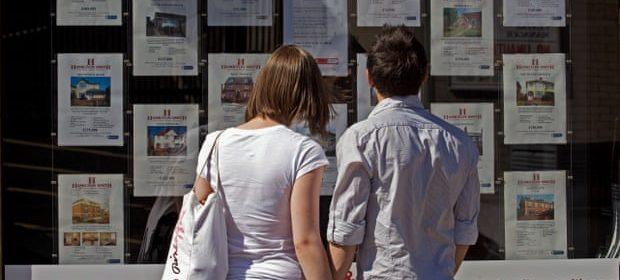How to turn the UK’s ‘generation rent’ into ‘generation buy’

Property is Britain’s obsession. As soon as the first lockdown ended there was a burst of activity in the housing market that only now seems to be tailing off. Andrew Bailey, the governor of the Bank of England, says if the only economic statistic available was the one for mortgage approvals you would never know there had been a pandemic raging in 2020.
There was certainly a disparity between the strongest demand for home loans since 2007 and what was going on in the rest of the economy. Even after modest falls in January, prices are still rising at an annual rate of 5.4% according to the Halifax, and 6.4% according to Nationwide.
Prices are high because there is a structural imbalance between supply and demand. Every government arrives in office pledging to boost the number of new homes being built but the facts speak for themselves: in the 30 years from 1958 to 1988 around 7.5m homes were built in England. In the subsequent three decades the number more than halved to around 3.1m. The supply of homes is affected by tough green belt regulations, local planning rules and by the lack of a land value tax to deter hoarding.
The UK is also a relatively small country with a growing population, so demand for homes is high, and there is a tendency for house prices to rise by more than the overall inflation rate. But last year, there were additional factors. Official interest rates were cut to record lows. Money pumped into the economy through the Bank of England’s quantitative easing programme boosted mortgage lending. Rishi Sunak decided that the property market needed a temporary cut in stamp duty. The lockdown made people yearn for a home with a garden. Finally, the government’s furlough scheme removed the one thing that would have prompted a house price crash: a big rise in unemployment.
The big losers from this, as ever, are the young people trying to buy their first home. For them, the long-suffering members of generation rent, there is nothing to cheer about when prices spiral upwards, because it means they have to save for even longer to put down a deposit. Most people under 30 would see a big drop in house prices as a blessing not a curse.
That possibility shouldn’t be ruled out entirely. The market is already softening because the stamp duty holiday had the effect of pulling forward to 2020 moves that would have taken place in 2021. Moreover, if Sunak seeks to withdraw stimulus too fast or there is another wave of infections, it is entirely feasible that there will be a tsunami of redundancies this spring and summer.
More likely though, prices will either go up a bit or down a bit with big variations according to region and house type. Interest rates are not going to be raised any time soon and the supply-demand mismatch will continue.
All of which means that the “Bank of Mum and Dad” is going to remain open for those fortunate enough to have an account there, and there will be pressure on the government to come up with schemes such as help to buy which provide subsidised loans for first-time buyers. A new help to buy scheme could be in next month’s Budget.
But the Bank of Mum and Dad and help to buy both have the same effect: they drive up house prices and make life more difficult for those people without well-off parents or who can’t access state support.
In this context, a new paper on how to address the challenges of the housing market and turning “generation rent” into “generation buy” written by the economist Gerard Lyons for the centre-right thinktank Policy Exchange merits attention. That’s not just because ministers often use Policy Exchange to float ideas. It is also because Lyons worked closely with Boris Johnson when he was mayor of London. It is clear he has been well briefed.
The paper says action is needed on both sides of the supply-demand equation. On the supply side, it calls for a housebuilding boom to provide affordable properties on “a massive scale”. On the demand side, it says that if more homes are to be built, then people need to be able to afford them and that means having access to finance.
The problem, Lyons says, is not that generation rent can’t afford to keep up their mortgage payments – they have shown they can by paying rent to landlords. Rather, the issue is that they can’t raise the deposit needed to satisfy the tough requirements insisted upon by lenders. His solution is a form of blended mortgage product that would deliver 95% loan-to-value home loans but be provided by three different financial institutions. The riskiest part of the mortgage – the bit between 85% and 95% of the homes value – would be provided by investment banks; the middle chunk would be provided by retail banks and building societies, while the last part would be delivered by long-term investors such as pension funds.
The paper supports the idea of a land value tax, and says the stamp duty holiday should become permanent, with no levy on lower-priced homes.
Levels of owner-occupation fell from a peak of 71% in the early years of this century to 64% less than a decade and a half later and have remained there ever since. One of the (many) reasons why the Conservative party polls poorly among young people is that its policies have been tailored to suit the interests of older voters. Lyons says this needs to change. That, though, requires some difficult choices, because sorting out Britain’s housing mess is not just a technical matter: it is massively political.
Source: Read Full Article
